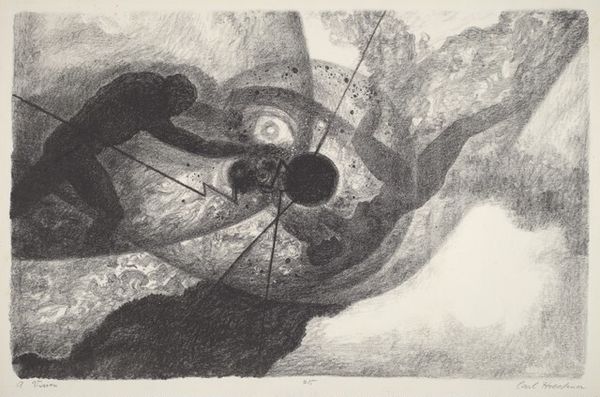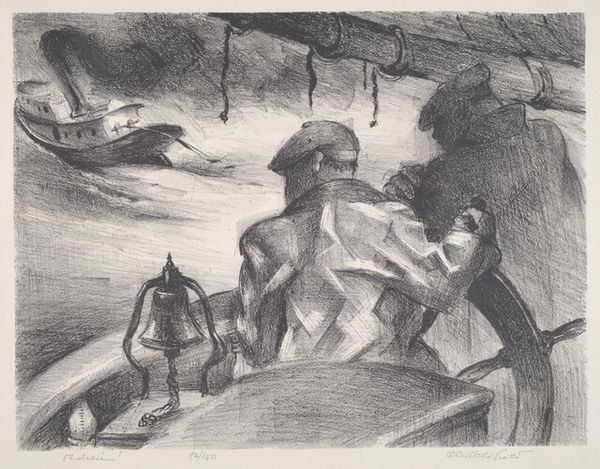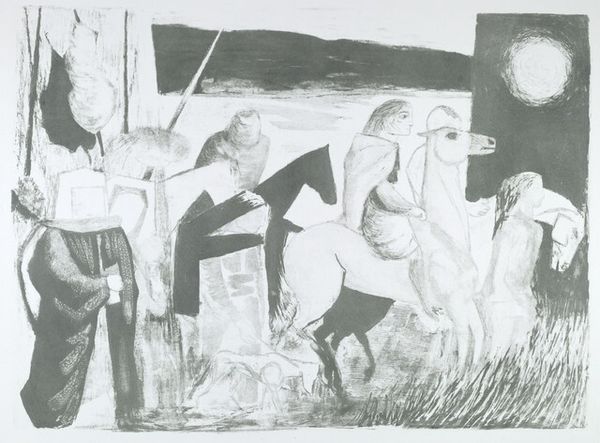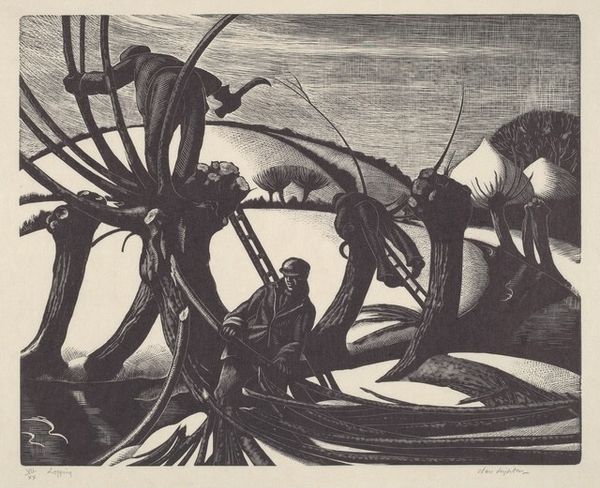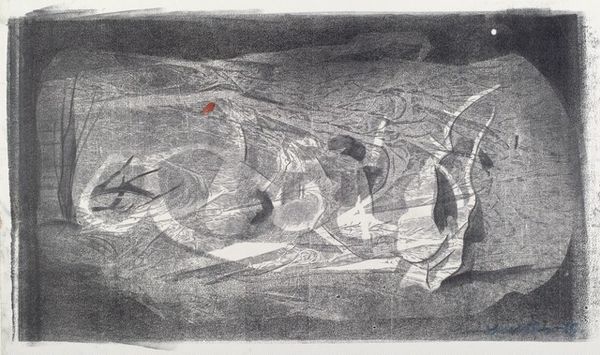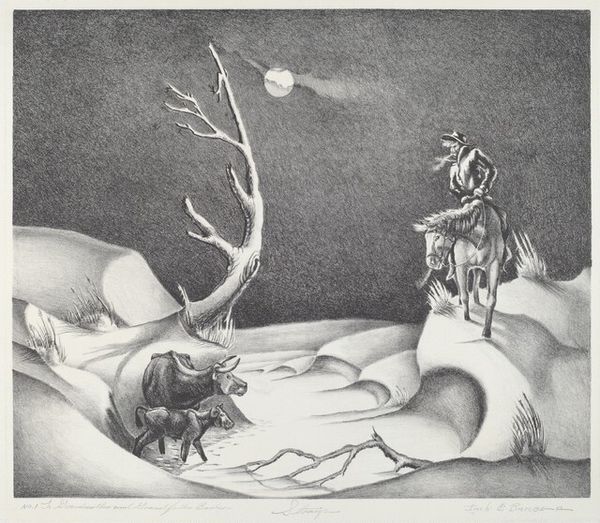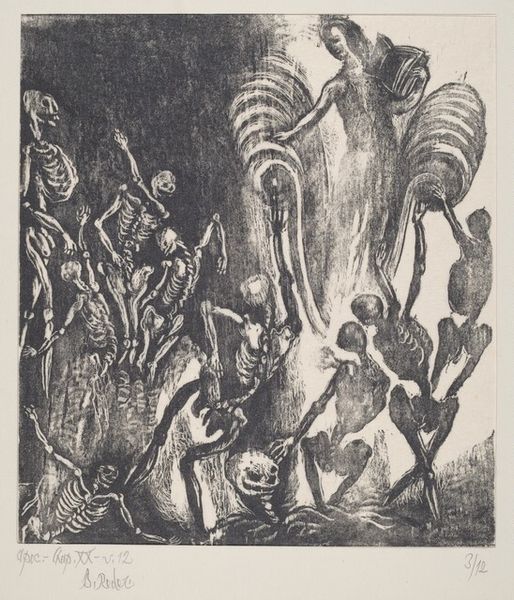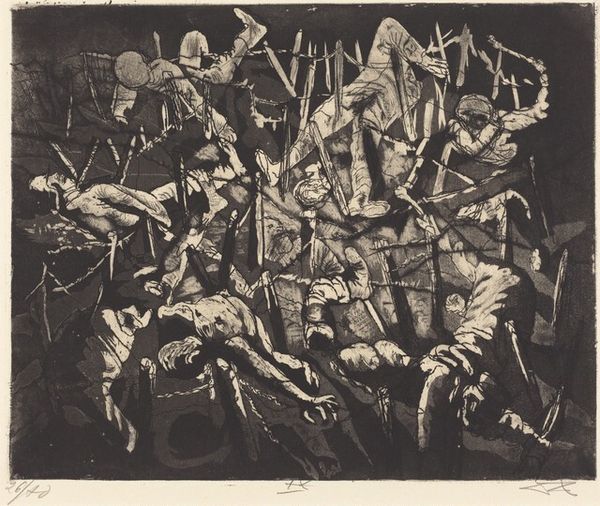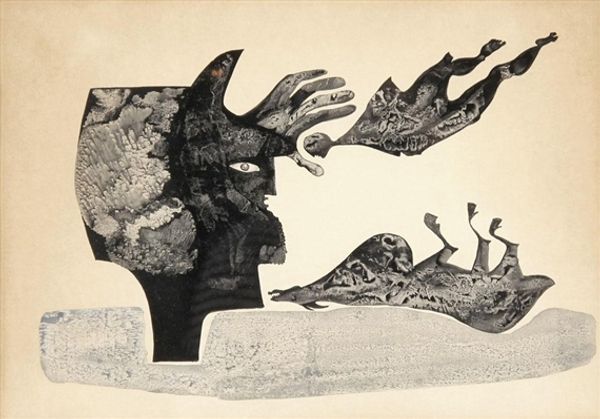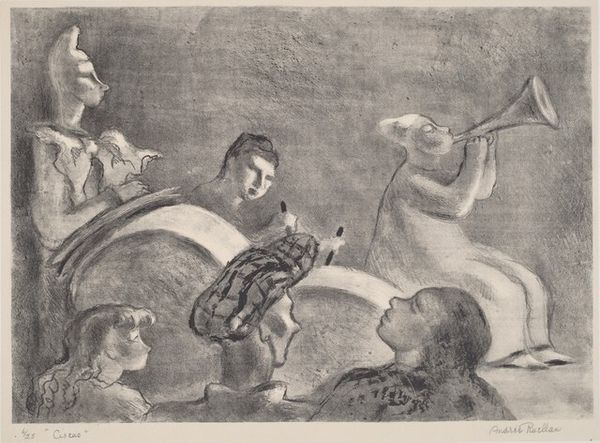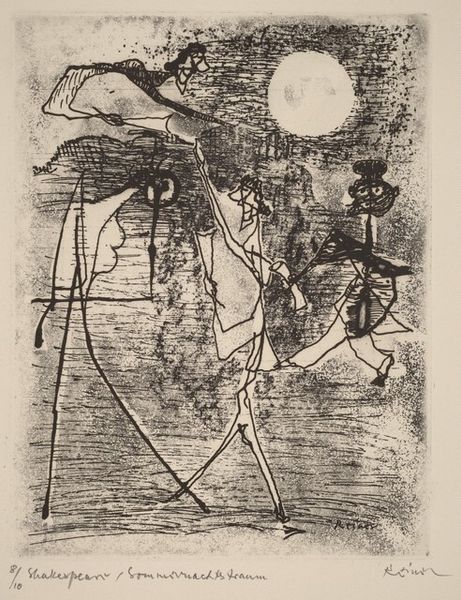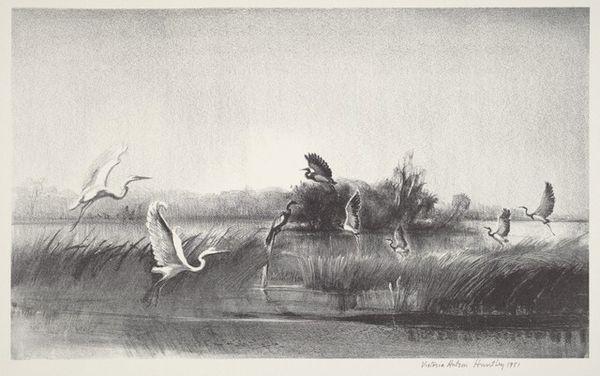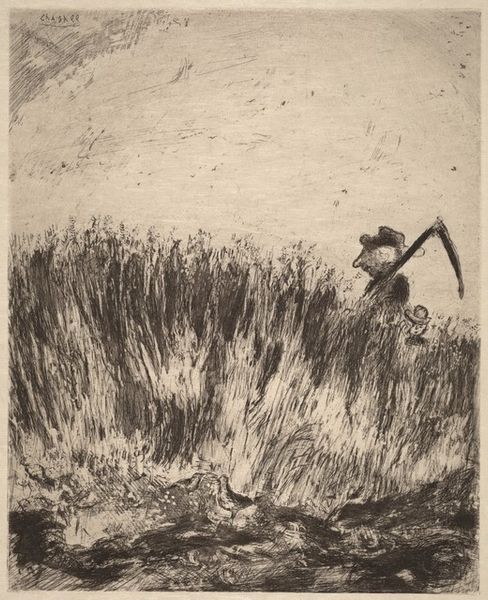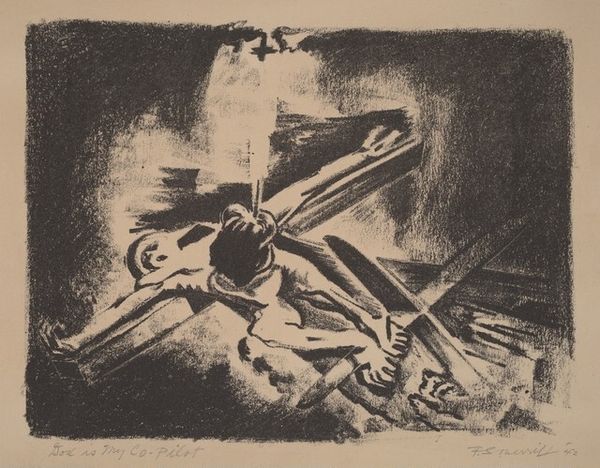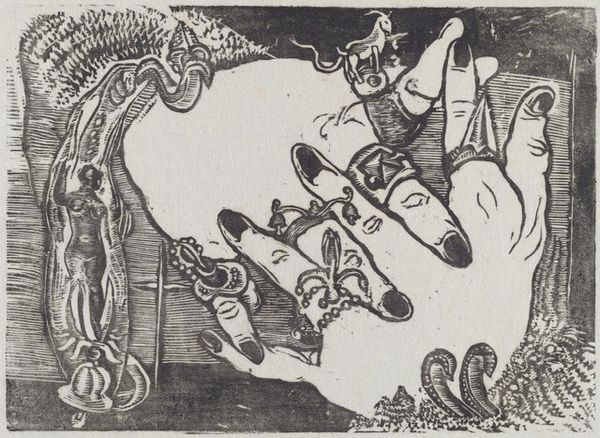
drawing, print, graphite
#
pencil drawn
#
drawing
#
narrative-art
# print
#
pencil sketch
#
charcoal drawing
#
figuration
#
pencil drawing
#
graphite
#
pencil work
#
graphite
#
erotic-art
Dimensions: Image: 267 x 435 mm Sheet: 345 x 495 mm
Copyright: National Gallery of Art: CC0 1.0
Curator: This is Alfred Bendiner's "Symphony for Strings," created in 1945, rendered in graphite and pencil. It presents an odd scene of two fishermen. What strikes you first? Editor: The stark contrast! The dark, dense shading of the figures against the blank background...it’s unsettling. Like a dream, almost a nightmarish one, given those distorted figures. Curator: Bendiner was deeply engaged with the political climate. Given the date, it's reasonable to assume this work reflects on the war. The intertwined fishing lines could symbolize the interconnectedness of nations in conflict, or even the entangled web of political ideologies. Editor: Intereseting...But for me, the formal elements override any political interpretation. Consider how the artist manipulates the graphite to create these monumental figures, almost caricatures. And look at the tension in the curved lines of the fishing rods—a direct contrast to the solid immobility of the men. Curator: Yet the grotesque figures feel deliberately positioned. Bendiner was satirizing the political leaders and military culture, framing these actions as both absurd and consequential. Their hyper-masculinity, caught in a bizarre, symbolic competition, points toward larger societal critiques. Editor: I see it slightly differently. Focus on the figure floating between them, the so-called "catch," rendered with swirling, chaotic lines. It appears to be the source of conflict and tension and not necessarily only war, more existential to me, a universal symbol of pursuit. Curator: Perhaps it’s both. The immediate post-war years were marked by both political unease and philosophical questioning of human nature. Bendiner masterfully captures that tension, creating an image that simultaneously invites historical contextualization and personal reflection. Editor: I am mostly intrigued by the sheer technique that translates into such an interesting emotional impact. The cross-hatching builds up an intense volume that feels heavy and laden with… well, you choose. Curator: Yes, well, regardless of the chosen narrative, Bendiner compels us to acknowledge the power of art as social commentary. Editor: And visual experience.
Comments
No comments
Be the first to comment and join the conversation on the ultimate creative platform.
